Must Reads: Life on Mars gets a test run in the Utah desert
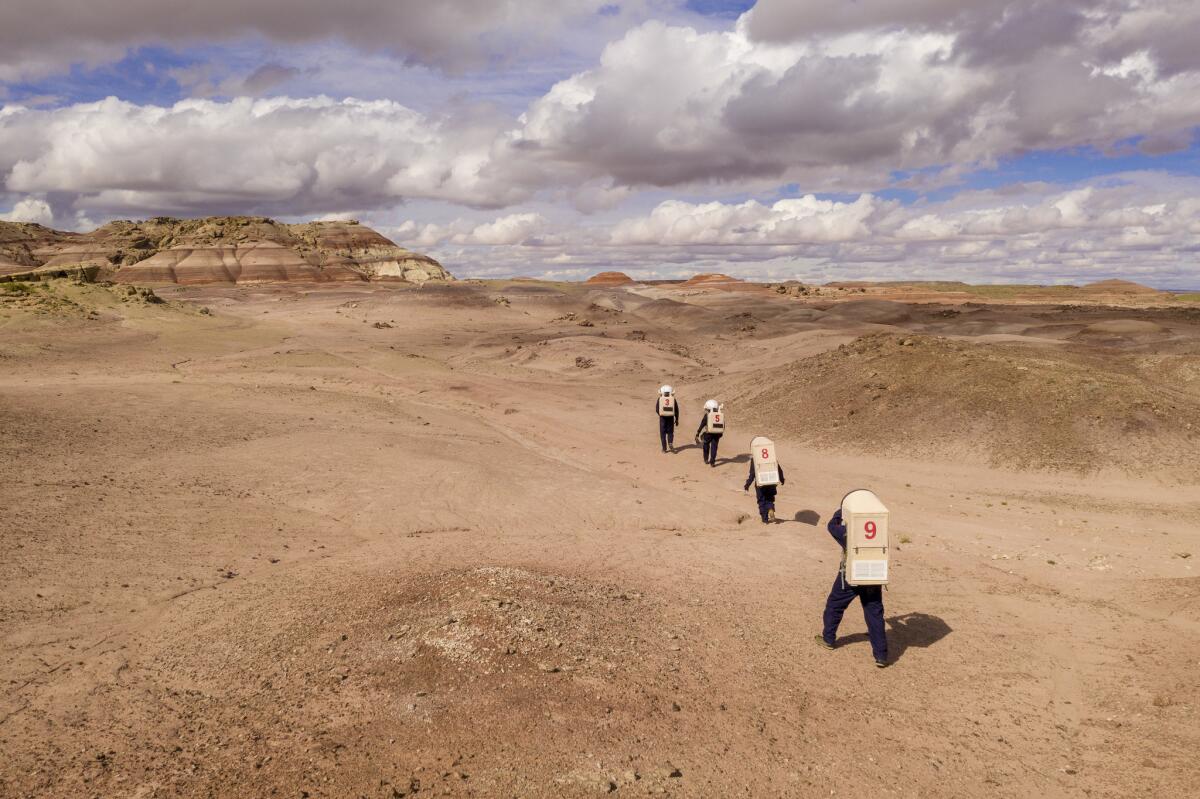
- Share via
Hang a right a few miles past the Dirty Devil River, bump down Cow Dung Road, and the barren, red landscape beyond morphs from mere desert into something, well, otherworldly.
Men and women in spacesuits and oxygen tanks pick their way around boulders. One collects soil samples. Another launches a drone.
The aircraft hovers then drops. Whirring blades thwack the ground before stopping. Dead battery.
The radio crackles. “Every day is a new problem,” the operator says with a sigh.
Welcome to Mars. Sort of.
Since 2001, the Mars Desert Research Station, a small complex that includes a laboratory, living quarters, observatories, a repair shop and a greenhouse, has served as a reliable stand-in for an actual base on Mars. The station is operated by the Mars Society, a collection of 10,000 space enthusiasts from more than 40 countries dedicated to exploring and settling the red planet.
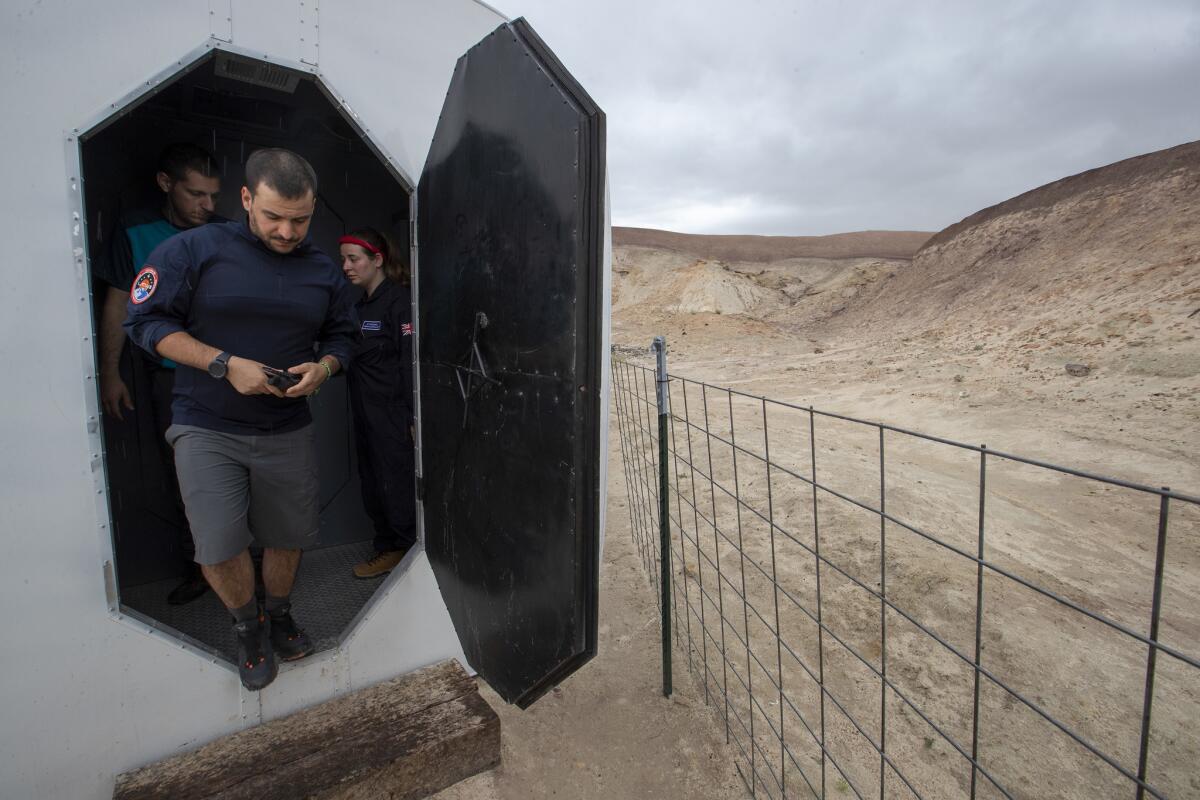
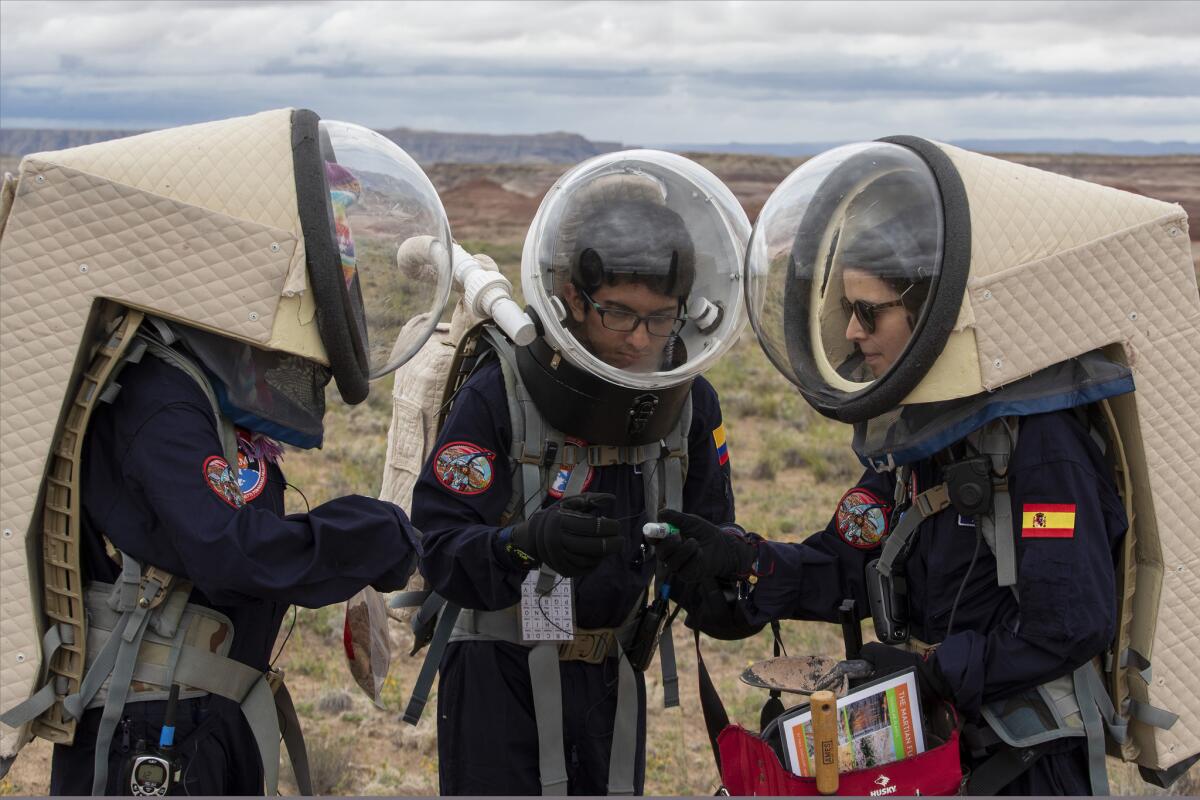
Researchers here pretend they are 140 million miles from Earth rather than seven miles from Duke’s Slickrock Grill and the Whispering Sands Motel in Hanksville.
“We are the Martians,” said Hanksville Mayor Kim Wilson. “They are the aliens.”
Now with NASA’s plan to land humans on Mars by 2033 and the promise of commercial space travel, interest in the station has soared. Engineers, physicians, geologists, astronomers, biologists and others come to test ideas related to living on Mars.
Last month, more than 500 college students from 10 countries took part in the station’s annual University Rover Challenge, aimed at creating the best vehicle for use on Mars.
“I could run two of these programs side by side and there would still be a demand,” said station director Shannon Rupert. “You no longer have to work at NASA to go into space, and a lot of people want to go into space.”
Most of the crews are now international and pay up to $1,500 a person for a two-week stay. They are free to perform their own experiments as long as they observe protocol.
That means no one leaves the station without a spacesuit. No one goes out in wind or rain. Electrical and plumbing systems are monitored and the greenhouse tended to.
The cylindrical, two-story crew habitat rises above the austere environment. Entering requires waiting five minutes inside a pressurized airlock.
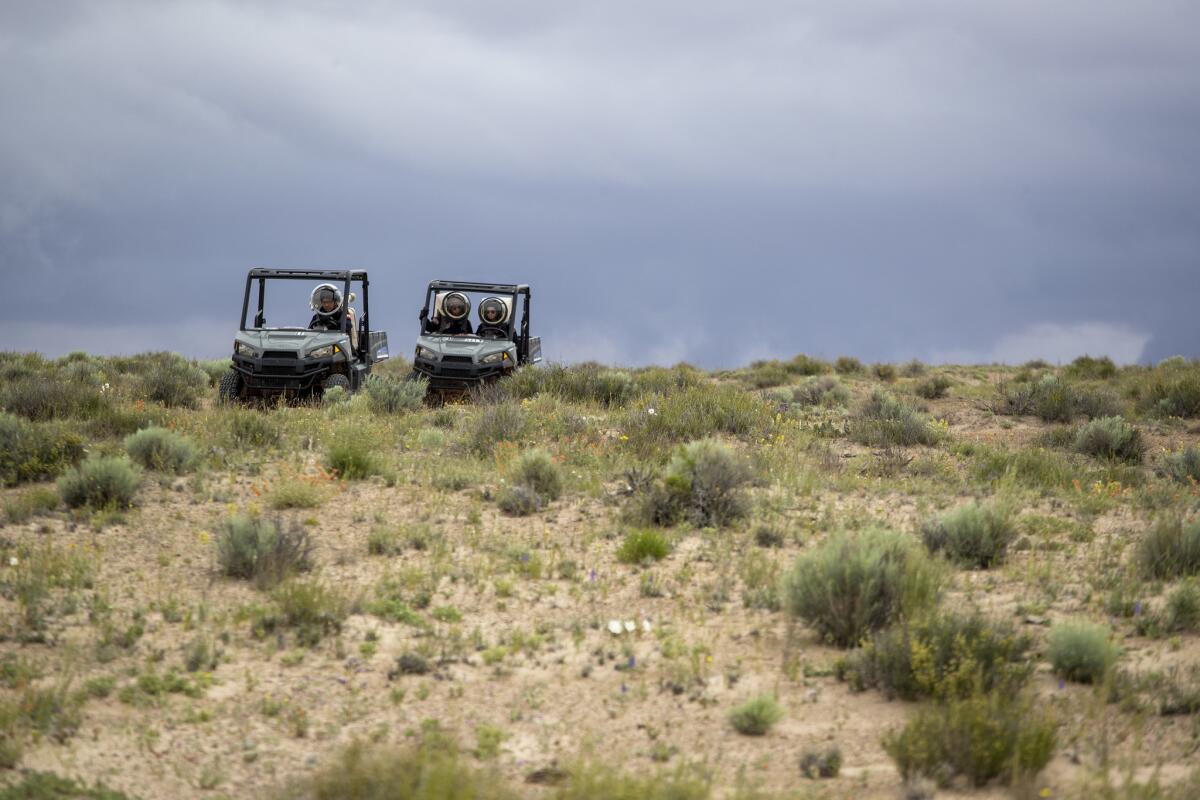
It’s not really pressurized, but would be on Mars, where oxygen is scant; the thin atmosphere offers little protection from the sun, and temperatures can fluctuate 100 degrees each day and often plunge to 80 below zero.
Camila Castillo, a 23-year-old biologist from Peru, was on her second mission. This time she was leading a seven-person team.
“As commander my role is to keep people calm,” she explained. “We are all passionate, but I must make sure we observe the protocols.”
Everyone had their own experiment.
Two Italian engineers, Vittorio Netti, 29, and Paolo Guardabasso, 27, were working on a drone that could fly on Mars, where more power is needed to get off the ground.
“We can use them to photograph the area around the station in a short time rather than send people out on potentially dangerous missions,” Netti said.
The living quarters are tight. A ladder leads to the second floor, which has an oven, table and seven sleeping quarters. The kitchen is stocked with freeze-dried food.
Above-ground walkways draped in white tarps simulate tunnels running between buildings. One path led to the greenhouse overseen by Hector Palomeque, a 28-year-old from Mexico who studies life in extreme environments.
He carefully examined the lettuce, basil and tomato plants.
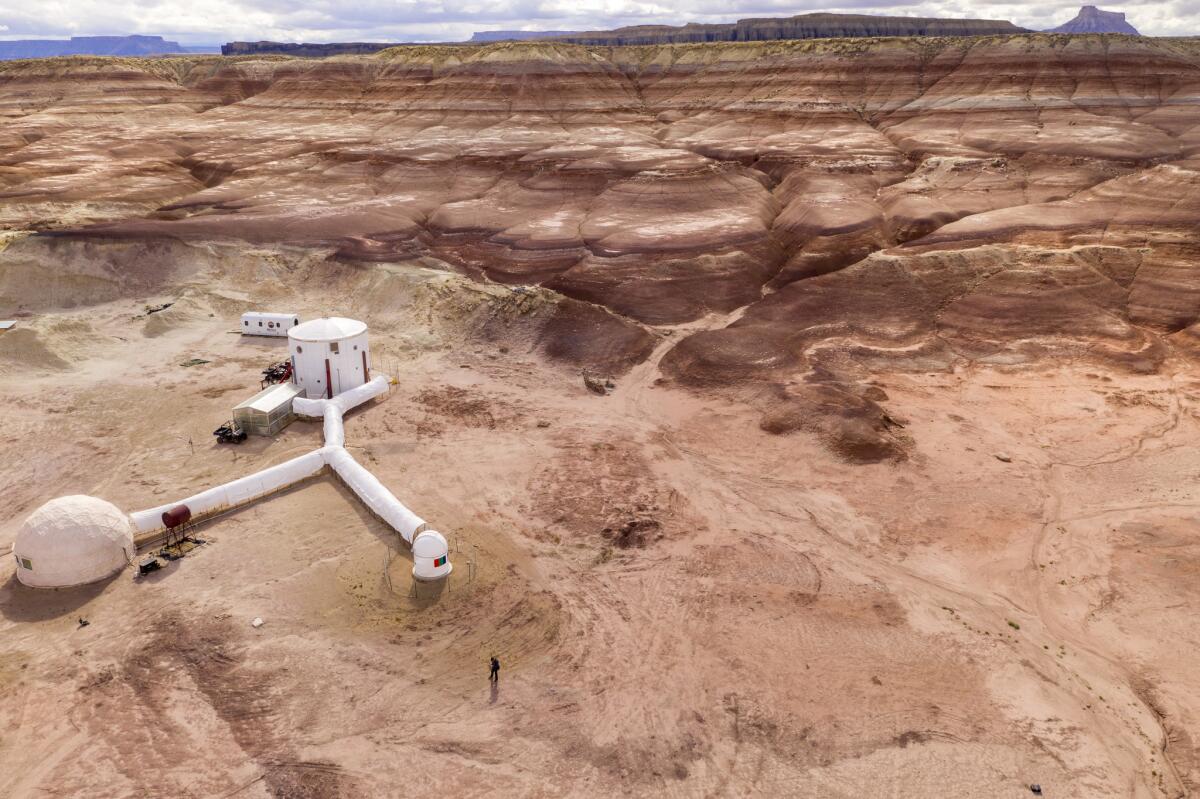
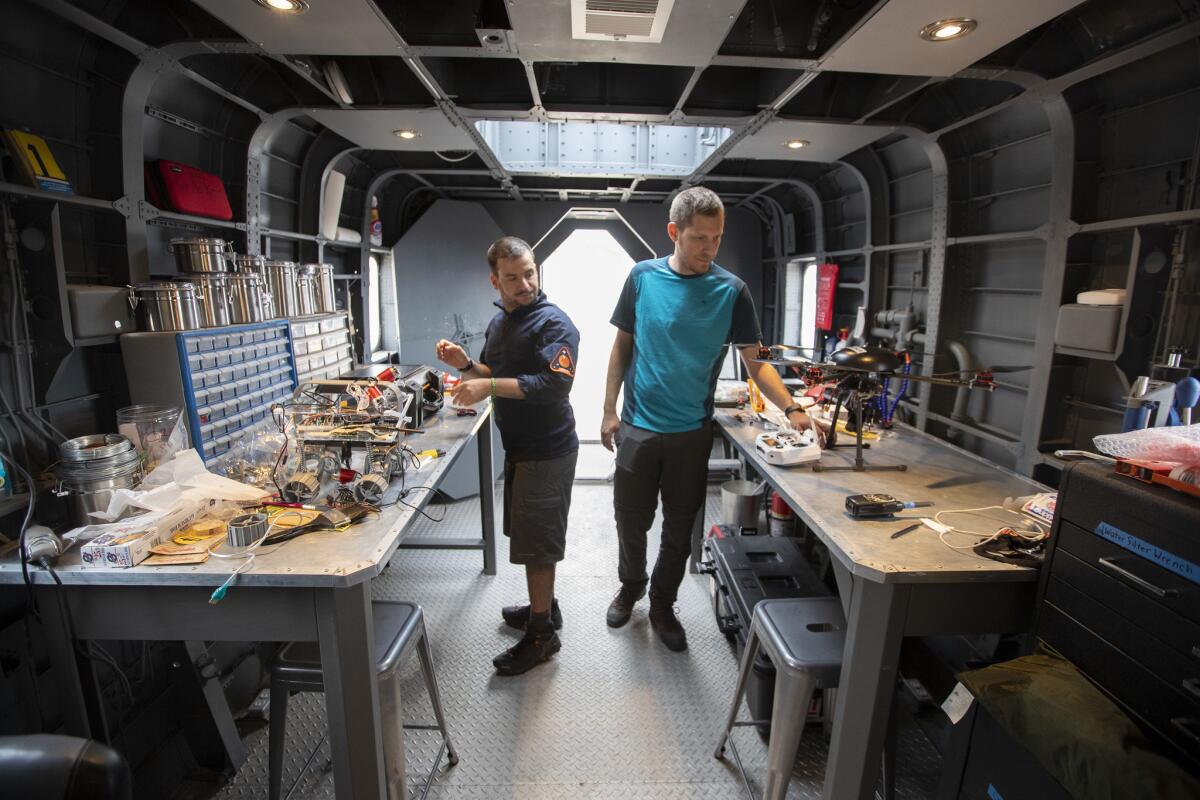
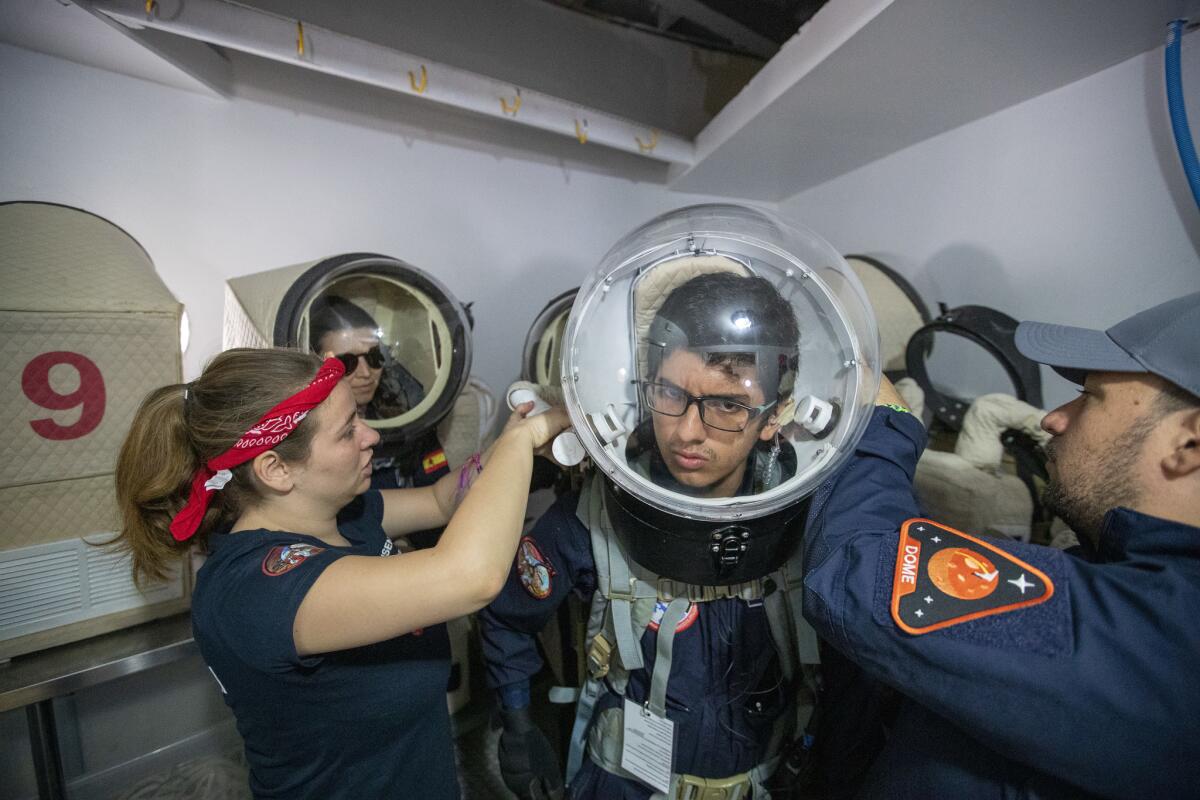
“The first people on Mars will be more farmers than astronauts,” he said.
Martian soil is rich in perchlorate and other compounds that make growing food difficult.
Mariona Badenas, 25, of Spain, walked past, heading for the observatory, where a special telescope allows her to look at the sun’s chromosphere, or second layer of atmosphere.
“Observing the sun on Mars would be critical to understanding how it would affect the crew and possibly interfere with communications,” she said.
Badenas, who has a degree in astrophysics from Yale, is crew astronomer. A tiny gold Saturn hung from her necklace.
She explained that her passion is exoplanets, which are planets found outside the solar system.
“Some are very small and some the size of Jupiter,” she said. “Some are made entirely of diamonds. I find them so amazing.”
Badenas hurried off to join Castillo for a mission. After battling their way into 25-pound spacesuits, they tested their radios and entered the airlock.
“The minute you put the suit on, you feel like Neil Armstrong going someplace no one has ever gone before,” Badenas said.
Once outside they hopped on a two-person rover and motored across the red desert, stopping to collect plants and soil.
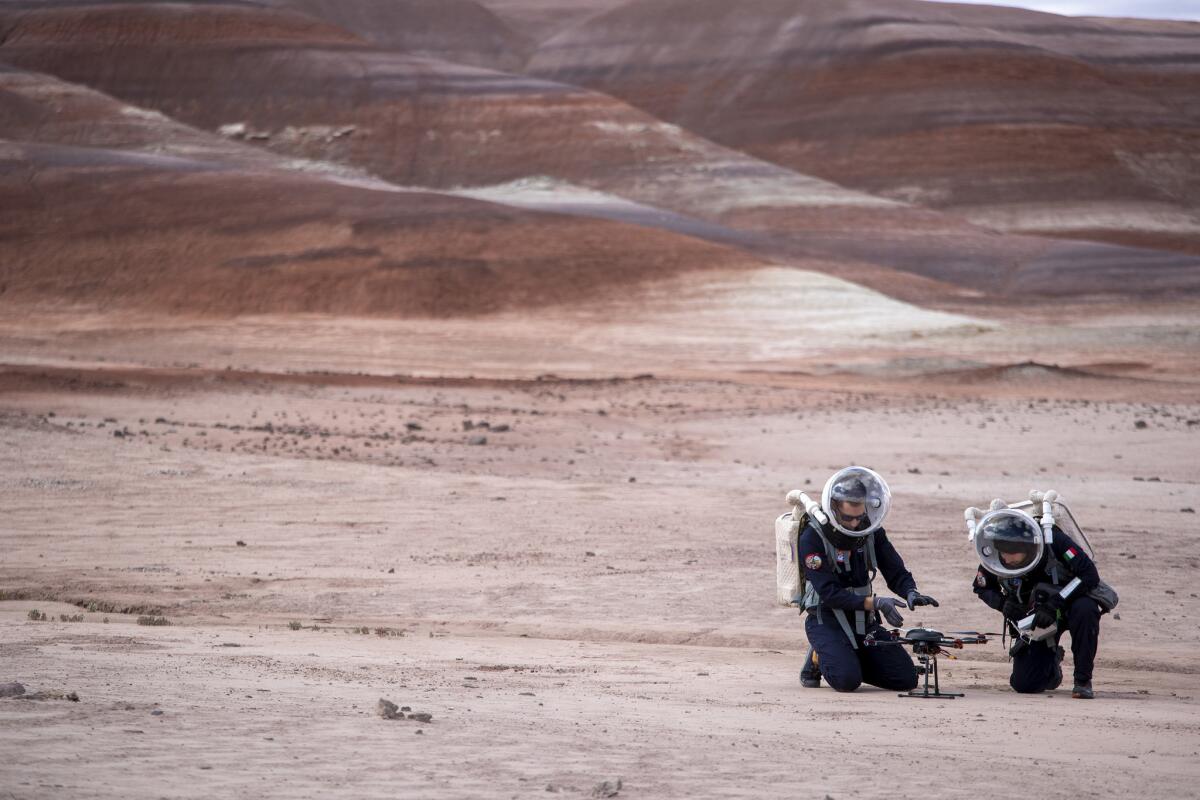
Afterward, Castillo took her samples to a lab inside a dome to look for microbes, the kind of study she would do on Mars to search for life.
“Microbes have superpowers for survival,” she said. “In Peru we have towering heights. We have adaptability everywhere. If microbes can adapt there and here, then I think they can adapt to anything.”
The man behind all of this is 67-year-old Robert Zubrin, president of the Mars Society and owner of Pioneer Astronautics in Lakewood, Colo., which develops technologies for space exploration.
Books about the moon and space travel jam his office shelves. Maps of Mars hang on the walls. Pipes, compressors and shiny machinery crowd his cavernous laboratory.
Zubrin, a nuclear engineer and NASA contractor, is an enthusiastic advocate for settling Mars. He believes the trip could be done in six months with existing technology depending on where Mars is in relation to Earth.
“NASA had plans in 1969 to land on Mars by 1981; then Nixon canned the whole thing. We had a total failure of leadership,” he said. “If that plan had carried through, we would have landed on Mars in 1981, had a permanent base on Mars by the late 1980s, and the first children born on Mars would be graduating from high school this June. That was the future not taken.”
Zubrin wrote the 1996 book “The Case for Mars,” laying out how and why to go, and last month he published “The Case for Space,” explaining why exploring space is critical for humanity.
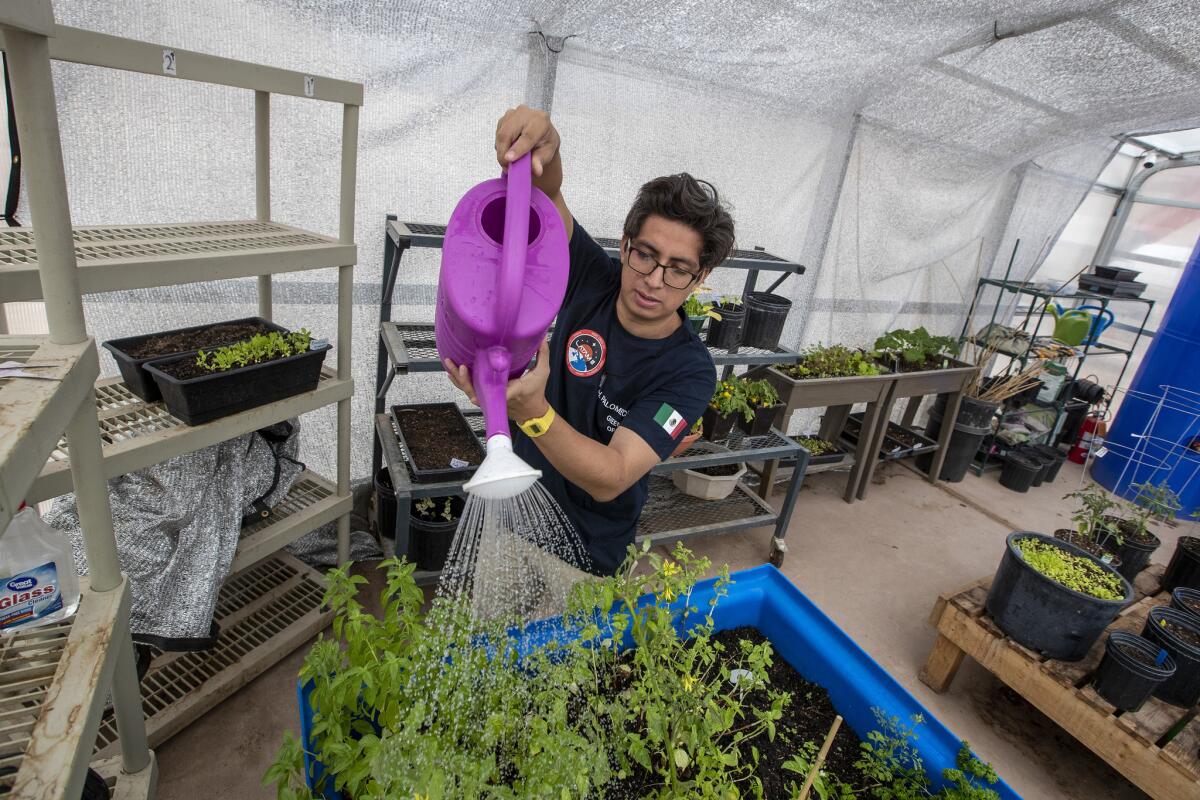
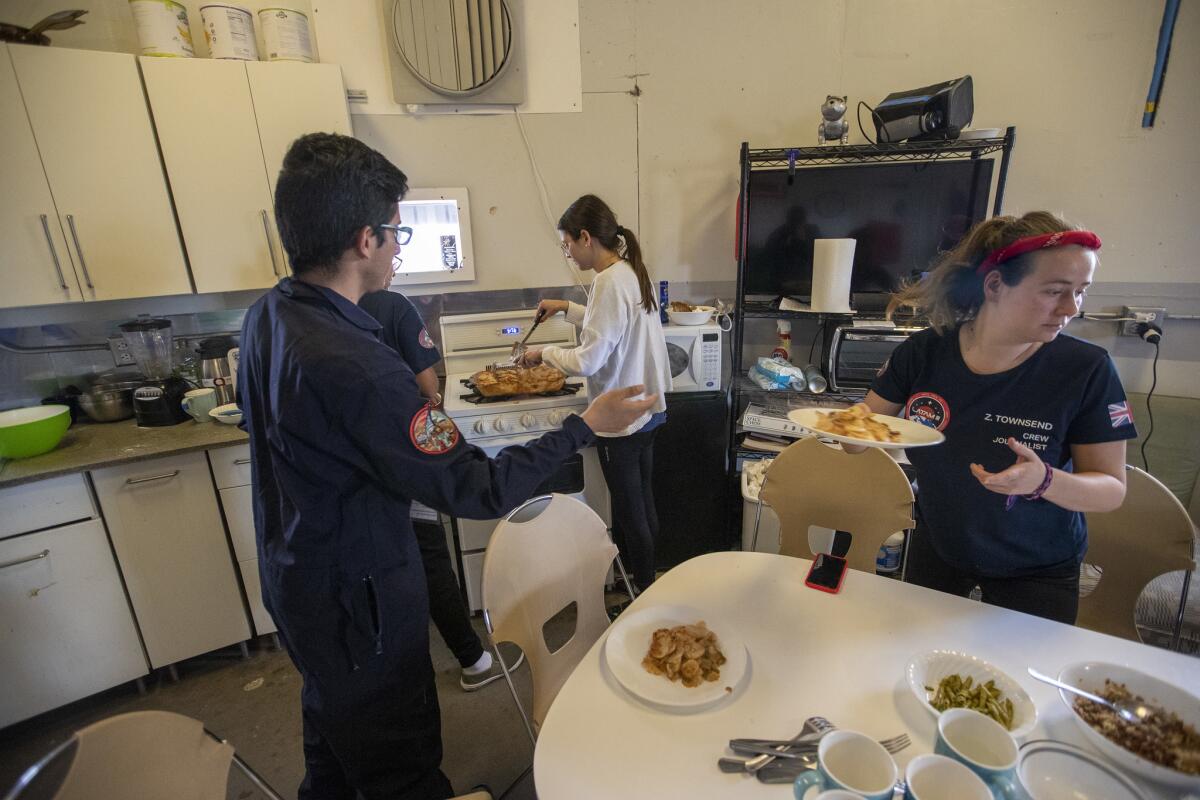
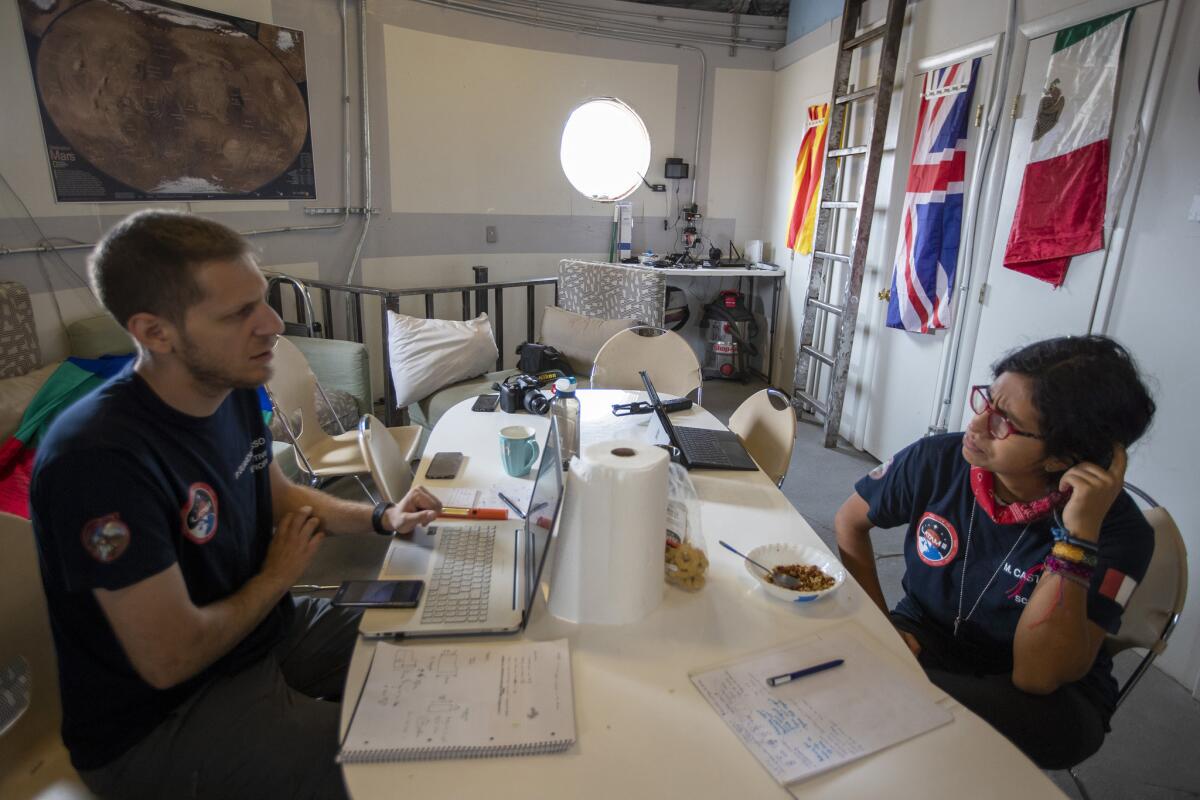
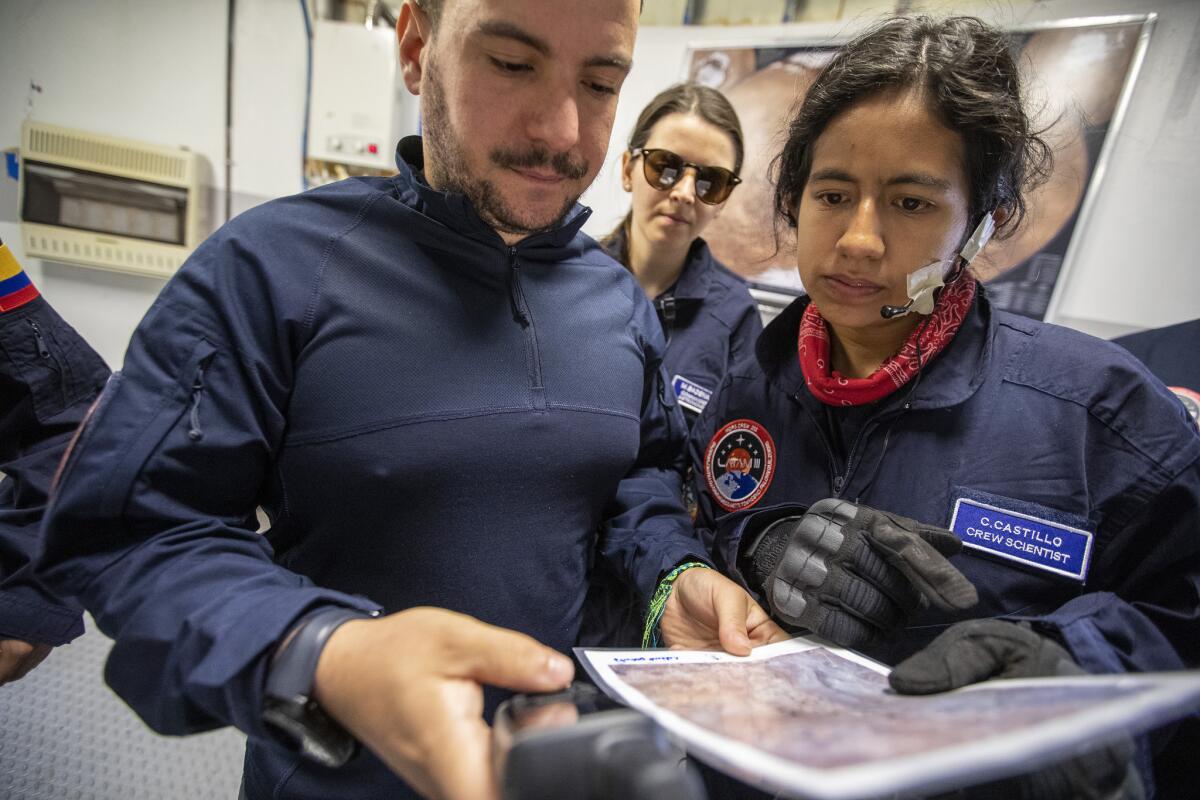
The society even helped create a red-green-and-blue-striped Martian flag. The red represents Mars now. The green and blue represent its transformation into something more habitable.
In 2000, the Mars Society built the first Mars research station on Devon Island in the Canadian Arctic. In 2001, the society constructed a second site on 40 acres near Hanksville.
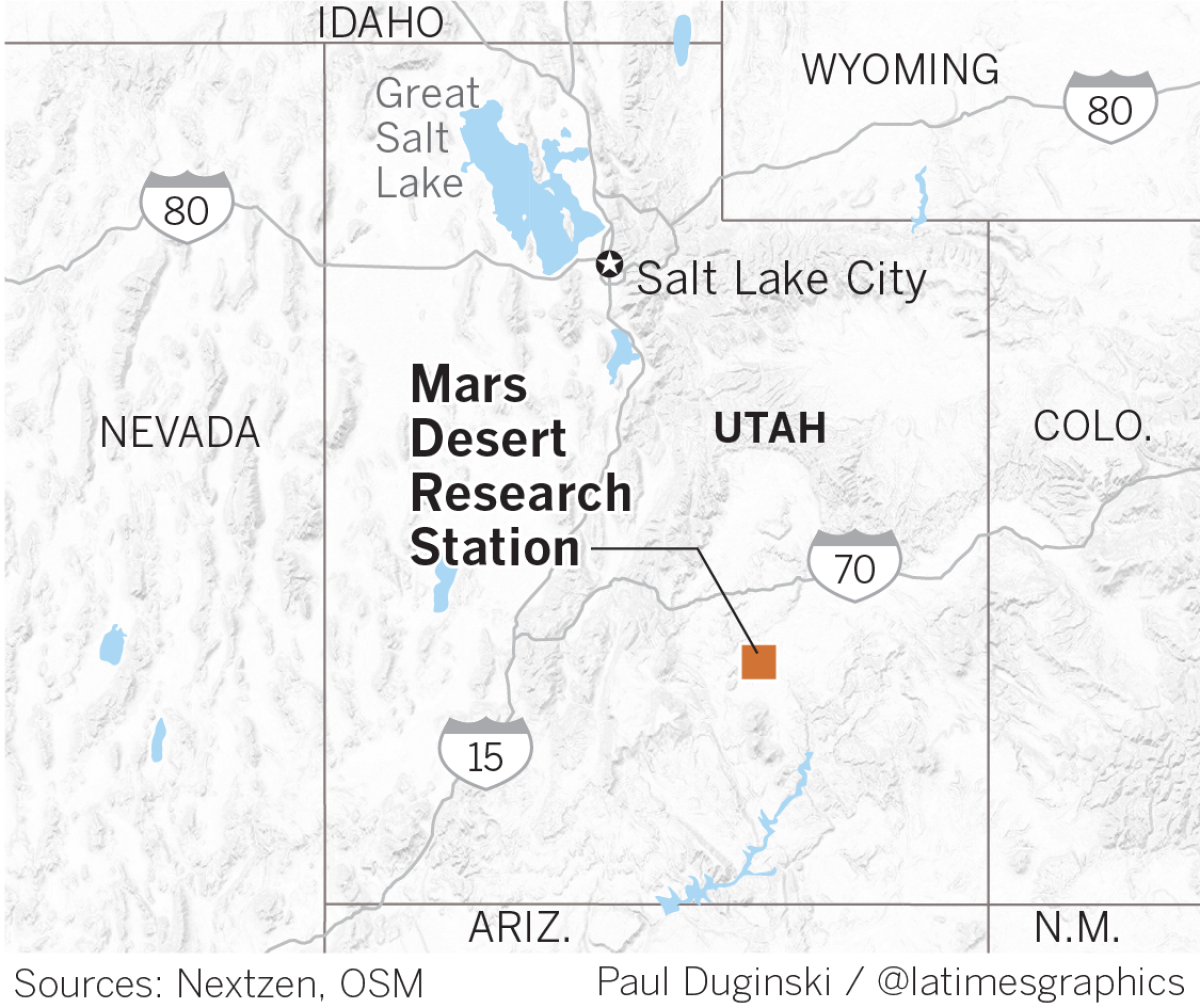
“We wanted a large theater of operations uninhabited, unvegetated and geologically interesting that we could explore,” Zubrin said.
The geology is nearly identical in age and appearance to that of Mars. Enormous rust-colored boulders and rock formations stretch for miles. Red-banded cliffs jut from a landscape of powdery orange sand.
The station was funded by donations including $100,000 from SpaceX founder and Mars enthusiast Elon Musk.
It’s less about developing new technology than it is about finding what works on Mars.
The researchers learned that small rovers work well, crews can get by on one short shower a week, and teams should be commanded on Mars, not from Earth.
Zubrin envisions a future Mars as a melting pot spawning new civilizations.
“Those that are successful will attract others,” he said. “I don’t want Mars to be the 51st state. I want Mars to be Martian. Mars isn’t the destination; Mars is the direction.”
Back at the station, the would-be Martian pioneers dined on dehydrated potato casserole with a sprinkling of fresh vegetables.
“The chard is nice,” said Zoe Townsend, 24, an engineer from England.
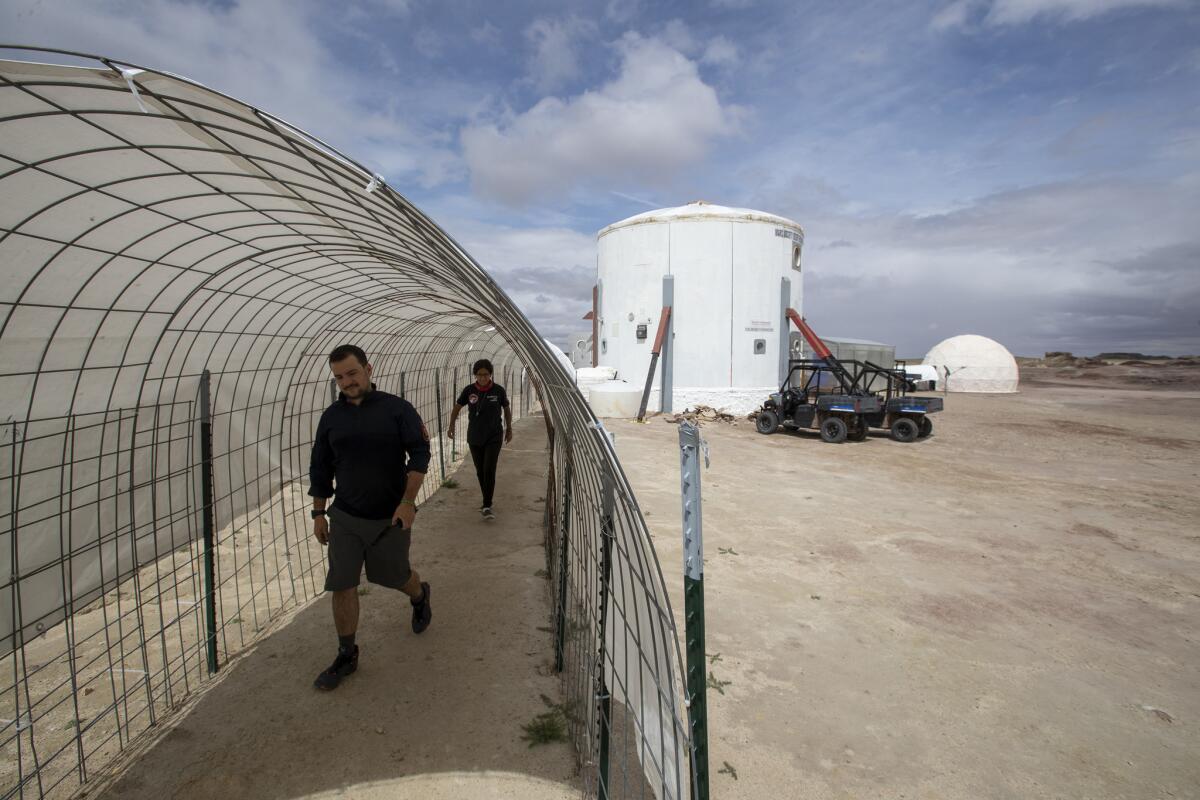
“It’s the only real thing in there,” said Guardabasso, comparing the fresh vegetables to the desiccated potatoes.
“The basil is real,” Townsend replied.
Townsend is an engineer at the European Organization for Nuclear Research, known as CERN, in Switzerland.
The hardest part of the experience, they all agreed, was not the isolation.
“It’s the opposite of isolation,” Townsend said. “It’s the lack of personal space.”
Patience, optimism, managing conflict and a sense of humor, they said, are crucial for a successful mission.
“A Peruvian journalist once told me I had the personality of an astronaut,” Castillo said. “I thought that was a beautiful thing.”
Later as the sky cleared, stars and planets flickered above. Mars beckoned.
Kelly is a special correspondent.
Sign up for Essential California
The most important California stories and recommendations in your inbox every morning.
You may occasionally receive promotional content from the Los Angeles Times.







